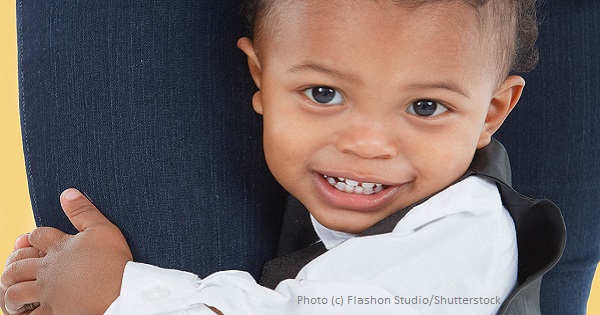 |
Letting Children Have Their Experience We need to allow children to experience struggle without stepping in or reacting so that they can learn to persevere. At times, it can be more valuable for a child to struggle and even to fail with a task or situation, than to succeed through assistance. This way, children can learn to experience failure with acceptance and a positive attitude, and think of positive changes for the future for themselves. If they are frustrated – or otherwise experiencing a big emotion – we can help them by simply giving them needed information and validating their emotions, if necessary (as will be explained in the next section). As parents, we naturally want to help our children; and often we do so unconsciously. We may feel that we are helping their self-esteem or teaching them how to do something by saving them from failure or struggle, but actually the opposite can occur. We decrease their persistence by jumping in when they are struggling and make them uncomfortable with failure when we save them from it. 2 A child who is not comfortable failing or experiencing struggle will become dependent and fearful and thus less confident overall. Also, many of us make the mistake of trying to problem-solve with a child – which is valuable – before waiting for them to be in a receptive state, which only leads to more upset, defensiveness, and shut-down. We first have to connect, and validate their emotions (as explained in the next section) and allow them to have their complete emotional experience before expecting them to be receptive enough to problem solve or make a positive choice. 2 Inevitably, however, we will save them from struggle or failure some of the time; we don’t need to feel guilty about that. Providing a kind, helping hand is a good example to set, and if a child asks for and welcomes the help it is wonderfully supportive to give it, as long as it is not too often and we convey the message that we have faith in their own abilities. Validation The term “validation” refers to acknowledging and communicating an understanding of the reasons behind another person’s emotions non-judgmentally. With children, we can do this in a matter-of-fact way, with a warm tone, labeling events and the child’s internal perception, without dramatizing, victimizing, or assuming their actual emotional state. 4 While it is not our job to “fix” their emotions, and in fact being too involved or not trusting their emotional process can cause them greater stress, we can help them through this process of simple validation or acknowledgement. We can also ask ourselves what they might be trying to express or heal, and help them to more fully heal and express it if necessary. Validation is a practice we can use to help our children feel seen, understood, and accepted in the face of big emotions so that they may do the same for themselves. Validation helps children develop emotional resiliency and also helps them to process events and choose more constructive and realistic perspectives about and reactions to events for themselves. This in itself is empowering and confidence building. With young children, we can simply say something like, “your banana broke into two pieces but you wanted a whole banana,” “you fell down and bumped your head,” or “your sister took the purple crayon that you wanted, and now you have the other colors to use.” As children get older, we can start to model and introduce more descriptive emotional language, without assuming their emotional state. 2 Accepting, connecting, offering simple language to help their processing, and being there for them while they experience big feelings helps children to understand that feelings are not scary or bad, but a normal part of the human experience. 2 Eventually they will see for themselves that such everyday events aren’t such a big deal, and they will move past big reactions and come up with their own solutions. Validation helps them move through this process quicker and more effectively.
This technique builds greater parent-child connection and trust as well, 5, 6 which is essential for a firm foundation of perceived security. And that bolsters esteem and resilience. How We Negate, and What To Do About It Psychologists explain that there are many ways that parents unintentionally negate – rather than validate – their children’s emotions such as denial (of a true problem), avoidance (of the child or their words/behaviors while they are reacting), distracting (a child away from their reaction), and inducing fear (through means such as threatening, punishing, or communicating that the child is not worthy of acceptance while having a reaction through words such as, “I will talk to you when you are being ‘nice’”). 2, 7, 8 These parental behaviors are more about the parent and either the incorrect messages they have received about how to handle children’s emotions, their own experience as children, or their own issues around emotions (usually due to their childhood experience) than anything to do with the child. Many adults are uncomfortable with emotion because of attitudes they encountered as children by adults who did not understand or appreciate the role and functioning of emotions. 8 Luckily, today we have a lot more information and understanding when it comes to emotions. Having such reactions as those previously mentioned towards our children’s emotions is linked with children taking on unhealthy psychological defense mechanisms, which inhibits the development of emotional intelligence, maturity, and resilience. This is shown to cause unhealthy reactions to life’s stressors and social situations as well as actually being more prone to illness. 8 When we see ourselves having a reaction such as denial, avoidance, distracting, “fixing,” or inducing fear while our children are having big feelings – and most of us will to some extent – we can view this as an opportunity to address our own emotional healing as well as an indication of something we can work on to help our children gain resilience and emotional empowerment and intelligence. 9 “We cannot be present to what is with our children, when our own baggage is in the way.” 4 It can feel more empowering to realize that this is an issue within ourselves that is in our power to change rather than a problem our children are causing that is out of our control. As Daniel Goleman 6 explains, emotional intelligence just might be one of the greatest predictors of both resilience and success. It helps us when we focus on healthy emotional responses. I believe this window into our own emotional reactions is one of the major gifts of parenthood, even if it doesn't necessarily seem like it at the time that it becomes apparent. Holding Space “Holding space” for someone means creating a safe and nurturing emotional and physical atmosphere for whatever they are going through. Connecting nonverbally by getting below a child’s eye level with a warm smile, hug, or reassuring hand on the back is one way we can hold the space for them as they experience big emotions. 2, 7 This helps them to accept, fully express, and move past emotions in a safe space. Connection also releases stress-inhibiting hormones within a child’s nervous system, helping them to problem-solve and thus have the confidence that comes from experience to be resilient in the face of many challenges. 2 It is also important to use language in the moment that communicates that the child is simply feeling an emotion – that the emotion is not who they are in that moment, and that it will pass. This may seem like a simple concept to us, but to a child the emotion can feel so big and scary, and they are so in-the-now that they may not realize this. By supporting our children’s emotional intelligence by understanding the role of emotional expression, allowing them to have their experience, validating their emotions, and holding the space for them to express emotions they learn that emotions, struggle, and failure are no big deal. In this way, they can learn to accept and then let go of the need to have a big reaction when they are ready, on their own terms. This is the third in a series of four articles on this topic by Jacqueline King-Presant, M.Ed., a child development specialist and consultant. The other articles are: Footnotes 1 Chopra, D., M.D. & Tanzi, R.E., Ph.D. (2012). Super Brain. New York: Harmony Books 2 Siegal, D., M.D. & Bryson, T.P., Ph.D. (2011) The Whole Brain Child. New York: Delacorte Press 3 Gray, P., Ph.D. (2015). Declining Student Resilience: A serious problem for colleges. Psychology Today. 4 6 Steps to Building Kindness and Resilience with Dan Siegal (videos). The Dalai Lama Center for Peace and Education. http://dalailamacenter.org/learn/dan-siegel-6-steps-build-kindness-and-resilience-children 5 Brooks, R., Ph.D. & Goldstein, Ph.D. (2001). Raising Resilient Children. Chicago: Contemporary Books 6 Goleman, D. (2005). Emotional Intelligence: Why it can matter more than IQ. New York: Bantam Books 7 Siegal, D., Ph.D. & Bryson, T.P., Ph.D. (2016) No Drama Discipline. New York: Bantam Books 8 Siegal, D., Ph.D. & Hartzell, M., M.Ed. (2003) Parenting From the Inside Out: How a deeper self-understanding can help you raise children who thrive. New York: TarcherPerigree
| |






